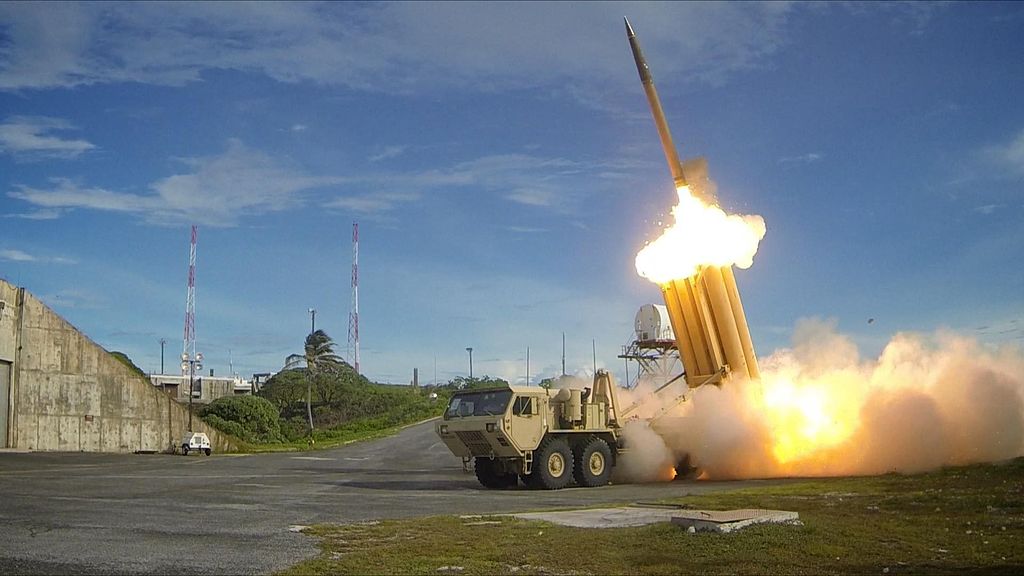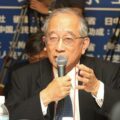Post-TPP Trade Vision ―Ordeal of multilateral trade without the U.S.
“The TPP will take jobs away.” The issues of trade policy held lead to the presidency of Donald J. Trump. Will the U.S. become protectionist? If so, how should we handle disputes? We will look at the future of world trade after the collapse of the TPP.

Kojo Yoshiko, Professor at University of Tokyo
The inauguration of the new Trump administration in the U.S. is increasing fears that the international economic order will become destabilized. By the time this paper has been published, President Trump will have ended his inauguration speech and I hope that the specific policies of the internal order will be made clear. However, his arguments at his first press conference as the president-elect held in January did not vary significantly from his arguments during the election campaign and did not reveal his specific policies for the U.S. on international trade. As a result, a sense of uncertainty about the international economic order has increased.
Setting trade policy as an issue in domestic society
One can argue that President Trump won the election because he positioned changes in trade policy as a priority issue. Withdrawal from the Trans-Pacific Partnership (TPP) Agreement, renegotiations on the North American Free Trade Agreement (NAFTA) and the accusation of China as a currency manipulator are the major pillars of his arguments. While in Japan, participation in the TPP has been an issue in domestic politics since around 2010 and raised public concern about the TPP negotiations, the people of the U.S. hardly paid attention to the TPP, although the country decided to participate in negotiations as early as in 2010.
Why did the TPP become an issue in the U.S. presidential election? There was a popular argument that the TPP would take jobs away from the U.S. This controversial point was made by Senator Bernie Sanders during the primary election of the Democratic Party, and Hillary Clinton, the other Democratic Party nominee for president, Secretary of State during the TPP negotiations, had no choice but to object to the TPP because the party’s nomination became a close battle. In a survey before the election, 72% of the pro-Trump camp responded that free trade agreements (FTA) were bad for the U.S., and 66% responded that the TPP would be the same. 68% of the supporters of the Republican Party, which used to be pro-free trade, also had the same view (opinion poll by Pew Research Center on October 27, 2016). Given that President Trump was supported by people who had a sense of stagnation about a future without wage growth and stance against FTAs, the trade policy of the U.S. is expected to tilt toward protectionism for the time being. What impact will this have on the international economic order?
Trump administration turning its back on multilateralism
What is certain about President Trump’s policies is that they show a tendency toward protectionism and unilateralism, as he revealed his principles of prioritizing the economy and putting America first. This tendency is also indicated in his promotion of people with protectionist trends to important posts for trade policy, such as the appointment of Peter Navarro as the director of the National Trade Council, who has a strong view on China.
However, it is not that unusual that the U.S. has implemented protectionist policies and unilateralism. Because the U.S. has supported international liberal economic system after World War II, the country has been regarded as the leader of the liberal economic order. In fact, however, the country has often resorted to protectionist and unilateral measures since the 1980s, when it faced a recession and an economic crisis. For example, the Clinton administration after the Regan and George Bush administrations set a goal of “economic security” in its foreign policy, which placed the highest priority on the recovery of employment in the U.S., appealing for a departure from economic stagnation and fiscal deficit. The Clinton administration conducted negotiation using numerical targets and riviving Super 301, a unilateral measure against Japan that was then the trading partner with whom the U.S. had the largest trade deficit. The Obama administration also included Buy American provisions in the American Recovery and Reinvestment Act of 2009.
Should we be more concerned about the protectionist and unilateral tendencies of President Trump? Yes, we should. First, we should be concerned that President Trump showed his position against multilateralism by referring to withdrawal from the World Trade Organization (WTO) during the election campaign. No other administration in the U.S. has ever made an argument to dismantle the multilateral free trade system in which the country has been a leader and from which it has obtained immense profits. The free trade system was built on rules of mutually assured multilaterally, which resulted in international economic stability, with each country developing trade by complying with such rules. Although the promotion of free trade is a major challenge, it is evident that multilateralism has prevented confrontations due to the rise of protectionism. The unilateral increase in tariffs between two countries as advocated by President Trump deviates from the rules. In addition, because the Trump administration regards trade negotiations as a zero-sum game, there is concern that this view will shake trade negotiations that were made on the assumption that profits obtained from trade should be regarded as common interests.
Second, the protectionist policies of the U.S. will spread to other countries. Protectionism is deemed to be problematic because international relations will become confrontational if countries start to take a beggar-thy-neighbor policy by prioritizing their own country. The Smoot-Hawley Tariff Act (signed into law in 1930 despite the opposition of more than 1,000 economists), a high tariff law in the U.S., created problems because it provoked protectionism in other countries and triggered the block economy, rather than worsening the Great Recession. There is a concern that if the U.S., which has been a leader in building the international liberal economic order since World War II, takes a clearly protectionist stance, it will encourage other countries to take a protectionist trade policy.
Third, it is unclear how President Trump sees the international order. Stable international economic order is an indispensable factor for stable international relations. The U.S. has not only concluded FTAs for economic reasons. The conclusion of NAFTA aimed for economic effects as well as the political and diplomatic purpose of stabilizing the North American region. The Obama administration positioned the TPP as an important policy in this rebalance, or as a pivot to Asia, as it had a dimension of security against China. If the new administration lacks such awareness, it could lead to the destabilization of the international order.
Lost political significance of TPP
Given that President Trump said that he would withdraw from the TPP immediately after inauguration, it is difficult to put the TPP into effect. It was thought that the TPP, if it became a reality, would have not only have an economic impact, but also a significant political and diplomatic impact on the Asia-Pacific region in terms of rule-making on economic exchange. There is no doubt that the countries making up approximately 40% of the global GDP will come to play a leading role in global rule-making as well as the Asia Pacific region in trade and other areas if they agree on the WTO Plus (liberalization beyond the WTO), including competition policies, the environment, e-commerce and the protection of intellectual property. While President Obama made a pointed reference to China, saying, “Global economic rules must be written by us, instead of countries like China,” following the broad agreement on the TPP, this indicates that the Obama administration placed a particular emphasis on the TPP in terms of struggle for leadership over rule-making in the Asia Pacific region.
In the Asia Pacific region, different relationships have been built on two important areas of security and the economy due to the rise of China. In security, high tension with neighboring nations is associated with the rise of China. In the economy, on the other hand, China and the Asia Pacific nations have built closer economic relations after the global financial crisis and the economic growth of China is playing a major role. In these relationships it is important for this region to prevent security and the economy from plunging into similar conflict and it was expected that the countries in this region would strengthen their collaborative relationships based on rules centering on the TPP and expand cooperative relationships in the region. We might say that this hope has faded due to the collapse of the TPP.
Is it possible to put our hopes on the Regional Comprehensive Economic Partnership (RCEP)? While the TPP had reached a broad agreement, the RCEP negations are still on their way. In addition, while the TPP tried to play a leading role in rule-making for liberalization beyond the WTO, the level of liberalization aimed for by the RCEP is not as high. China wants to lead the RCEP and has a high degree of market intervention by the state. Last year the EU, the U.S. and Japan made the decision in the WTO that they were still unable to evaluate China as a market economy country. At the RCEP Trade Negotiation Committee and related meetings held in December 2016, the member countries agreed on the achievement of early agreement, but it affected only in two of the 15 areas because there were differences in their views on the liberalization rate of tariffs, among others. In addition, the trilateral FTA among Japan, China and the Republic of Korea (ROK), which is deemed to have an impact on the RCEP, is not progressing due to the unstable domestic politics in the ROK.
While Japan and other member countries that participated in both the frameworks of the TPP and the RCEP prioritized the TPP negotiations in the past, negotiations for the RCEP will be prolonged if they focus their efforts after the collapse of the TPP and demand a high level of liberalization. If the U.S. takes a forceful trade policy against China, it is possible that China will accelerate the RCEP negotiations. However, it is an open question how much contribution the RCEP will have with its low level of liberalization, which is driven by China’s competition with the U.S., on the stability of this region.
Problem of disparities having a decisive influence on trade policies
The U.S. opposition to free trade agreements and the withdrawal of the U.K. from the EU will stagnate the building of a mega FTA, which has been characteristic of recent trade policies. The TPP has collapsed and the outlook for the FTA between the U.S. and the EU has become uncertain. Japan is also negotiating an FTA with the EU, but Brexit may delay the negotiations. FTAs have proliferated rapidly in the past and it was said that the age of the mega FTA had arrived. The domestic distributive problem of free trade has finally come to light. Although internal disparities is not directly attributed to free trade, the domestic base for the free trade system will be shaken if people who think that jobs will be taken away by the increase in free trade.
Since Congress has authority over trade policies in the U.S. and trade policies are pursued not only by the executive branch of government, it is unlikely that the measures advocated by President Trump will be put into practice as they are. However, it is expected that occasions where he will resort to protectionist policies will increase. Because a free trade environment is essential for Japan, it is important to gain domestic support for free trade by correcting disparities here in order to remain involved. In addition, Japan should respond based on the rules against the protectionist policies of the U.S. and other countries, using the dispute settlement procedures of the WTO. We might say that it has become increasingly important for the stability of the East Asian region that Japan works to maintain the framework of cooperation in this region by aiming for a high level of liberalization in the RCEP negotiations.
Translated from “Posuto TPP no tsusho koso ― Beikoku naki takokukan boeki no shiren (Post-TPP Trade Vision ― Ordeal of multilateral trade without the U.S.),” Gaiko (Diplomacy), Vol. 41, Jan. 2017, 64–68. (Courtesy of Toshi Shuppan) [January 2017]




